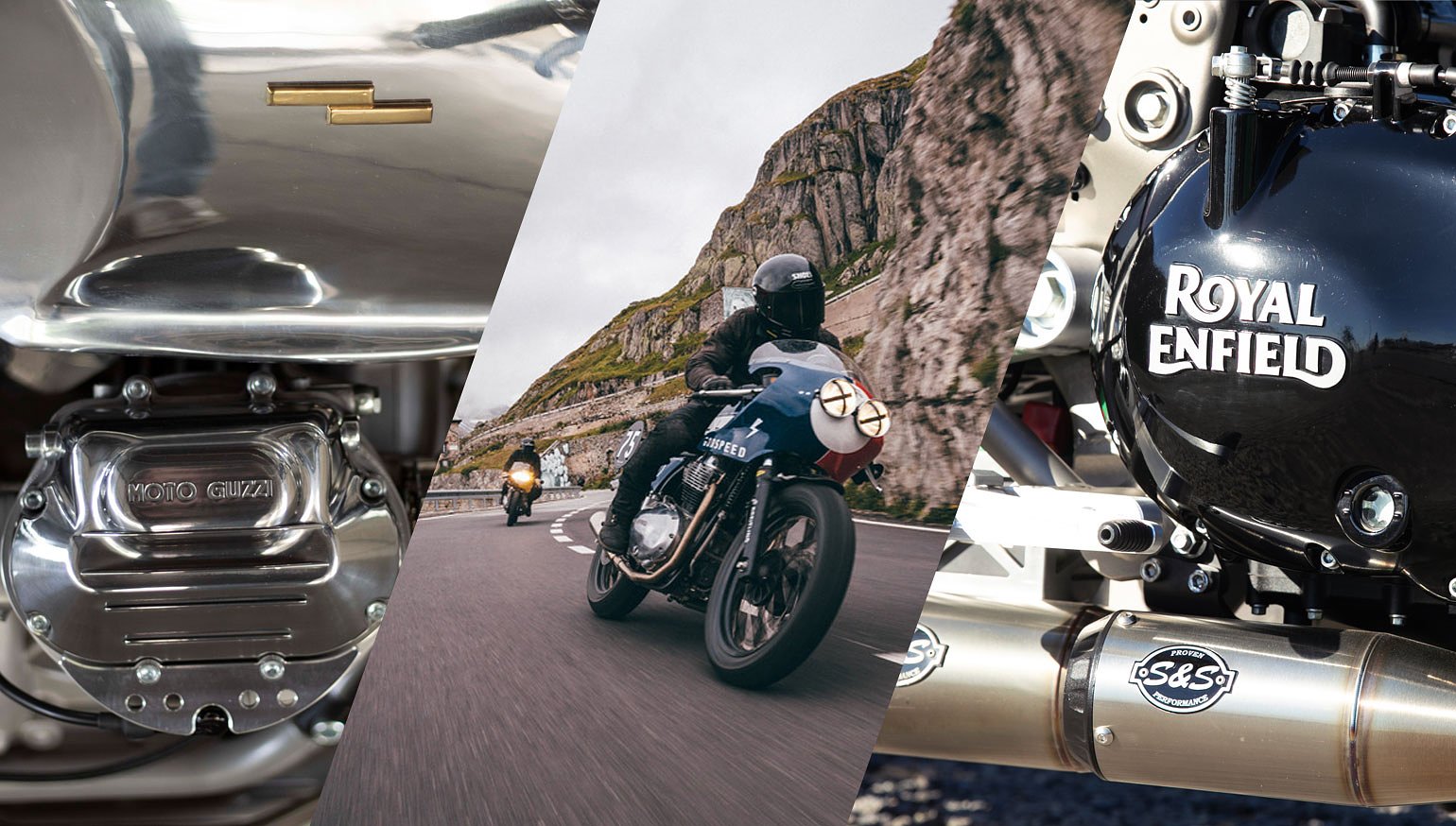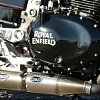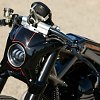At present, Royal Enfield is by far the most active manufacturer in the custom motorcycle scene. In this edition of the custom roundup, we explore two of their latest collabs, one from Japan and one from Britain, that resulted in vastly different outcomes. We'll also check in with Vienna's Horizontal Moto to take a look at a Moto Guzzi Le Mans café racer built using their signature style.
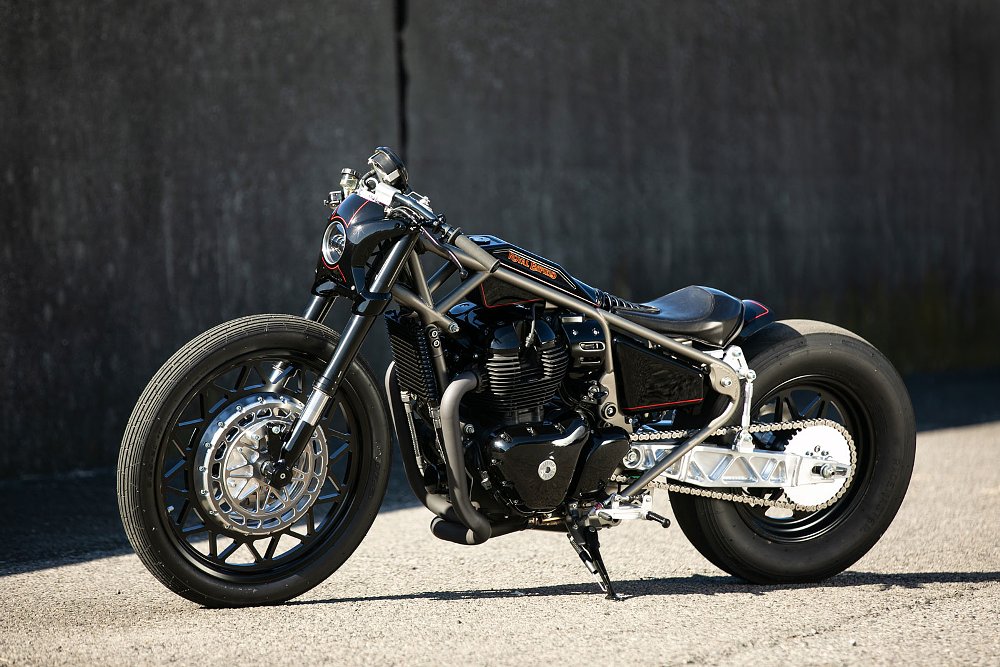
Sureshot Royal Enfield "Samurai"
Unveiled by Royal Enfield at the Mooneyes Yokohama Hot Rod Custom Show in December of 2024, this heavily modified Shotgun 650 is the work of Tokyo-based builder Takuya Aikawa and his Sureshot (Instagram) workshop.
Nicknamed the "Samurai," Sureshot's Shotgun 650 bears little resemblance to Enfield's original creation. The chassis, for instance, is a bespoke mix of custom and original frame components. The neck tube and engine supports are original, while almost everything else has been custom-built by Takuya-san. The new design features beefier tubular steel and narrower dimensions.
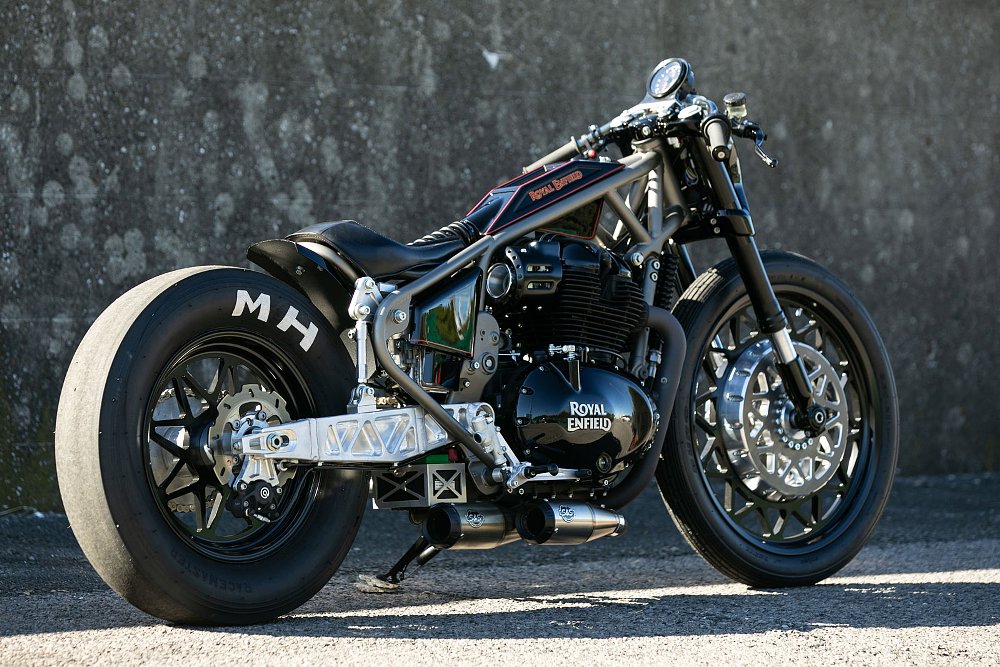
The Sureshot frame also incorporates a custom rear suspension system. The new setup utilizes a monoshock actuated by linkages attached to a chunky machined aluminum swingarm. While this type of suspension configuration is common on modern motorcycles, what stands out about this one is how the shock itself has been installed. Running from beneath the rear of the fuel tank and into the front of the seat, it's a bold statement that would undoubtedly make even the bravest of men a tad nervous.
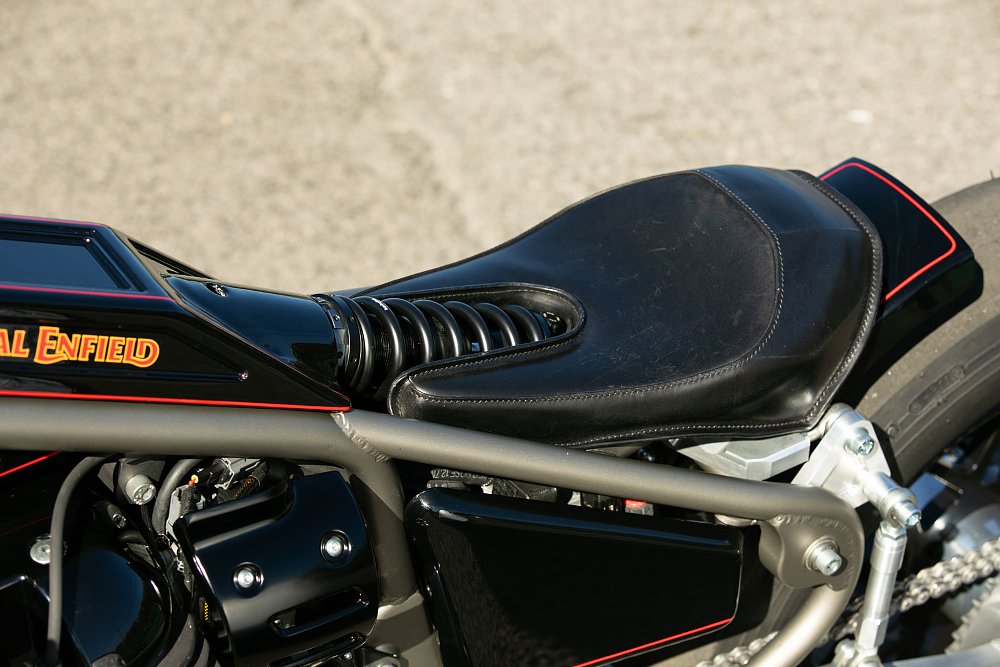
Up front, the suspension setup is much more conventional. Takuya-san opted to retain the stock triple clamps and fork, making some internal tweaks to lower the stance and improve performance. He also designed the 21-inch front and 16-inch rear wheels, both machined from solid aluminum. The front wheel is wrapped in classically styled DURO rubber and features a custom-made inboard disc brake, while the rear is fitted with an M&H drag-profile tire and Brembo brake components.
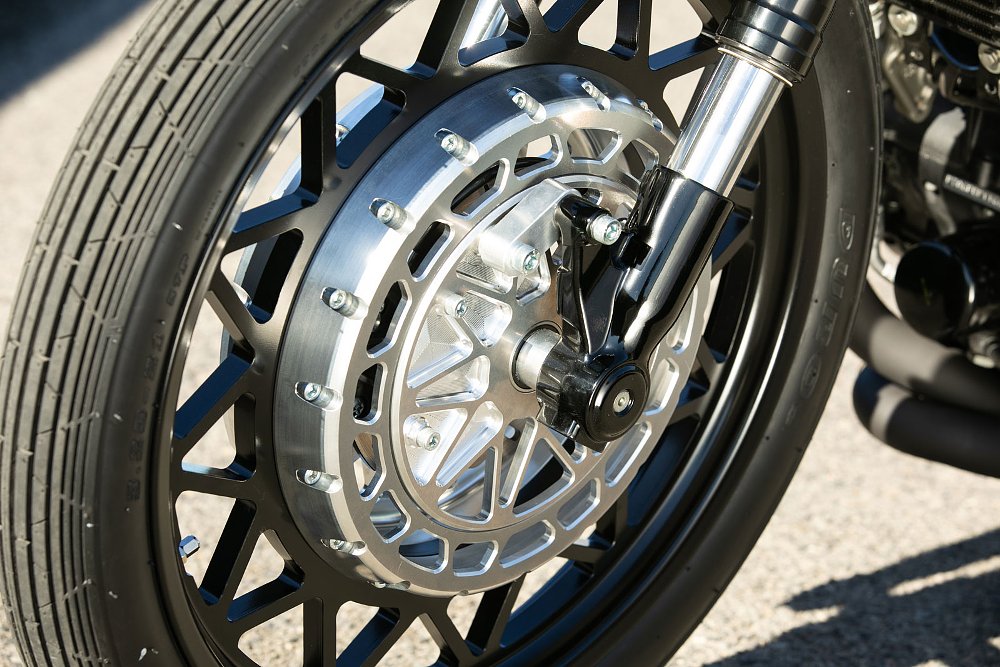
To create the Samurai's unique look, Takuya-san fabricated the bodywork and many other parts on the bike from scratch. This includes an aluminum front cowl, inspired by the Shotgun's original fairing, along with adjustable clip-on handlebars, footpegs, rear fender, and side panels. Known for his penchant for performance tuning and motorsport, Takuya-san built this bike with drag racing in mind, making weight reduction a top priority. As a result, the low-profile tank only holds enough go juice for a handful of sprints down the blacktop.
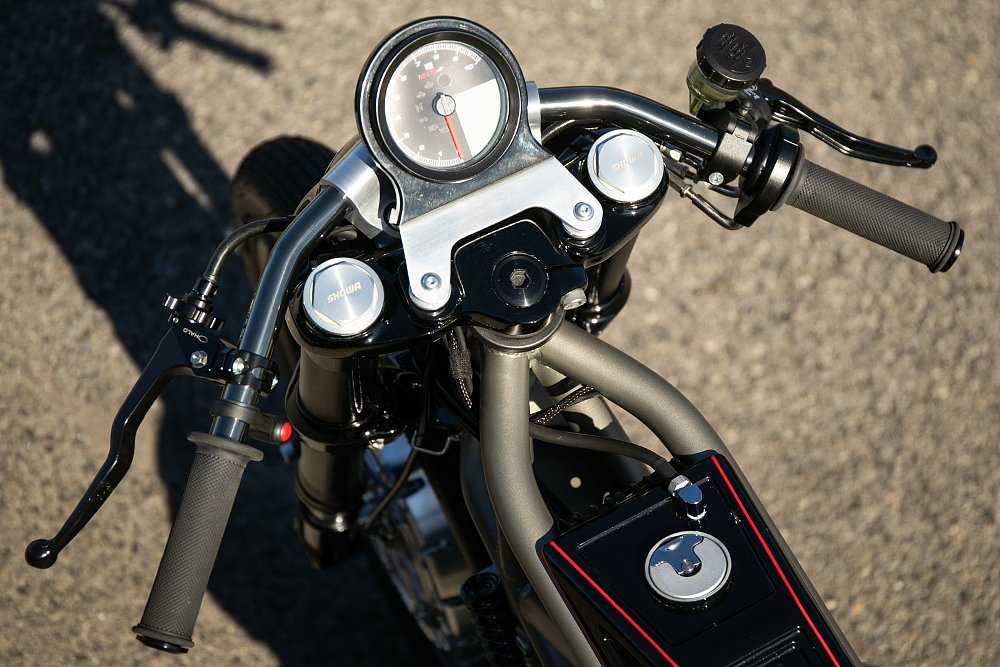
To ensure the Samurai had performance worthy of its name, Takuya-san used his engine-tuning expertise to enhance the Shotgun's parallel twin. The upgrades start with an S&S Cycles Big Bore kit, increasing displacement to 865 cc. S&S also supplied forged connecting rods, a high-performance camshaft, and high-compression pistons. Fueling is managed by a Dynojet PCM, while the engine inhales through velocity stacks and exhales via a two-into-two S&S exhaust system.
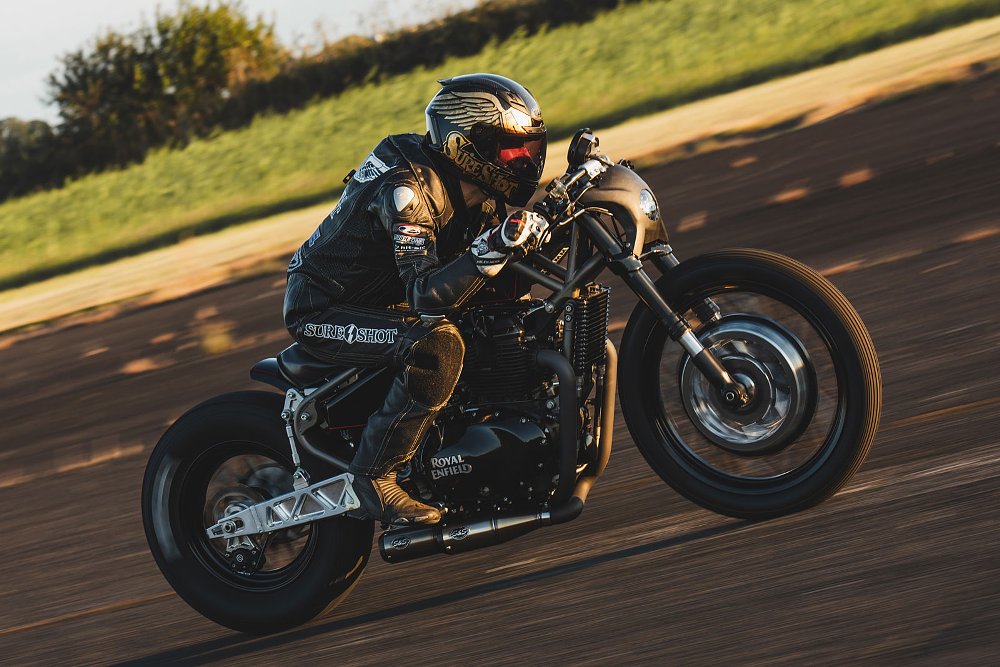
Before presenting the build at the Mooneyes Yokohama Show, Takuya-san wanted to put his Samurai to the test. So, one month before the event, he entered it into the JD-STAR Drag Racing Championships, where it clocked a respectable quarter-mile time of 12.804 seconds.
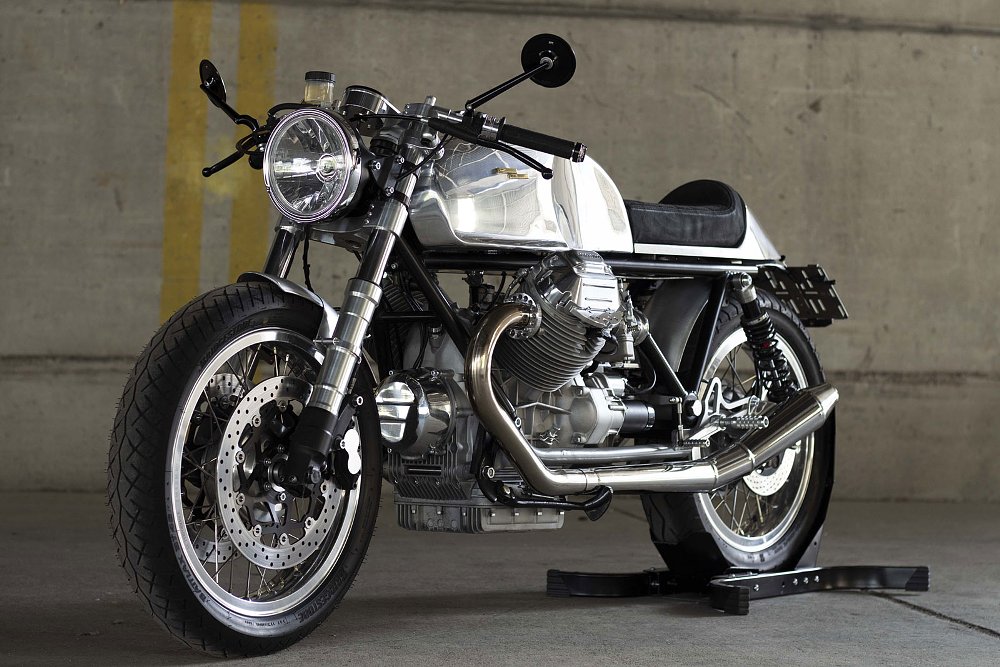
Horizontal Moto Guzzi 923 Le Mans
Paul Führmann of Vienna's Horizontal Moto (Instagram) likes it when things line up. After a career in engineering, Paul changed tack to follow his passion for Moto Guzzi motorcycles. His soft spot for straight lines comes into play when he builds a custom Guzzi. "The name of my workshop, Horizontal Moto, represents my commitment to creating motorcycle designs that embody sleekness and elegance — embracing horizontal design lines," he says.
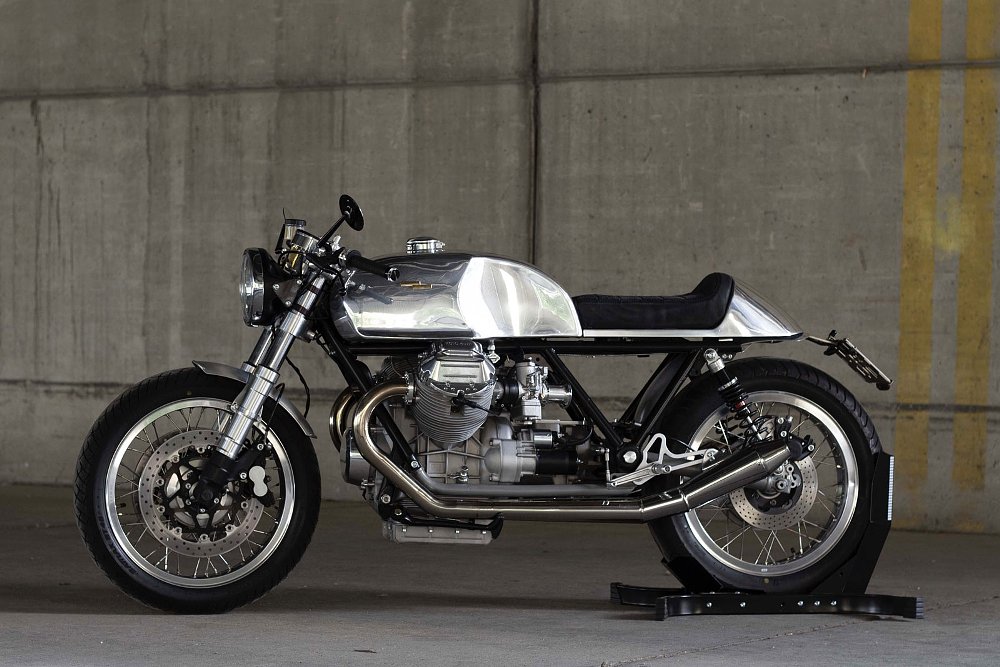
Along with his soft spot for straight lines, Paul has an affinity for frames designed by famed motorcycle engineer Lino Tonti. As a general rule, all Horizontal Moto bikes are based on Tonti-framed models, including the 1980 Le Mans 2 that served as the foundation for this build.
When it comes to styling, Paul takes a traditional café racer approach. "I focus on simplicity and clean lines," he explains. "The Horizontal 923 is a prime example of this aesthetic. Built upon a Tonti frame, it embodies the essence of minimalism while retaining a captivating allure and aerodynamic design."
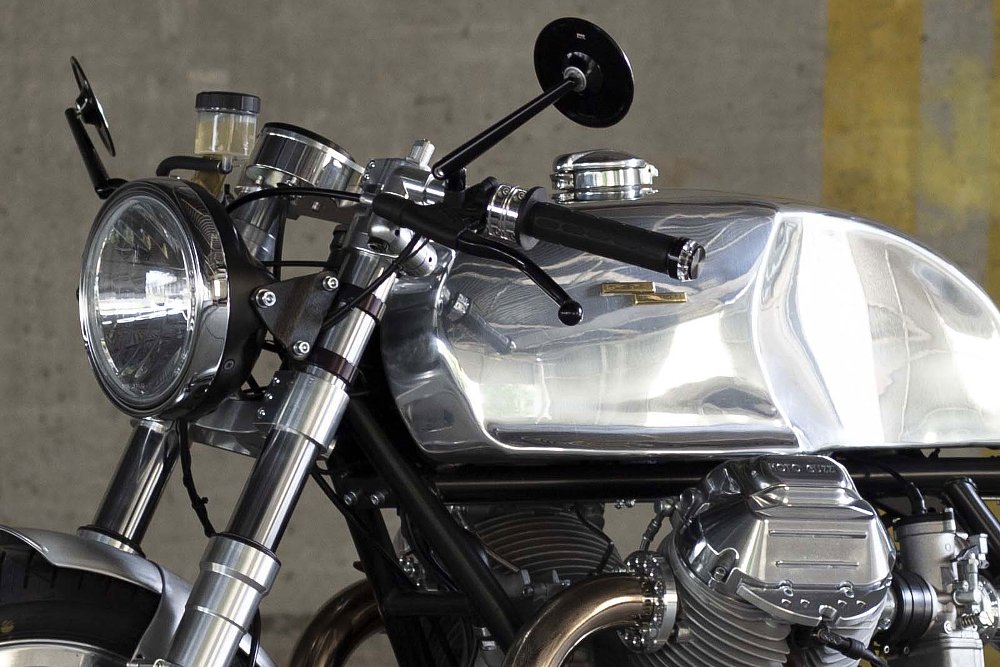
To bring his designs to life, Paul takes a collaborative approach, focusing on his strengths while relying on specialists to complete tasks outside his skill set. For this project, he teamed up with Friedhelm Lammers, a metalworker who has been shaping sheet metal since the 1980s. Lammers hand-shaped the fuel tank and tail unit from aluminum sheets, polishing them to a mirror finish. Perched atop the tail unit is a suede leather seat by Viennese upholsterer Ledernardo. Paul also worked with a Bavarian exhaust expert to fabricate the two-into-two polished stainless steel exhaust system to his specifications.
Paul's work on the 923, beyond the design concept, began with a full overhaul of the Le Mans 90-degree V-twin. With advice from Moto Guzzi tuning legend Peter Horvath, he increased the engine's displacement to 950 cc and installed a long list of performance upgrades. These include a lightweight flywheel, high-torque camshaft, expanded intake channels, and a CNC-milled oil pump. Complementing the tuned exhaust are 41 mm Dell'Orto carburetors fitted with machined alloy velocity stacks.
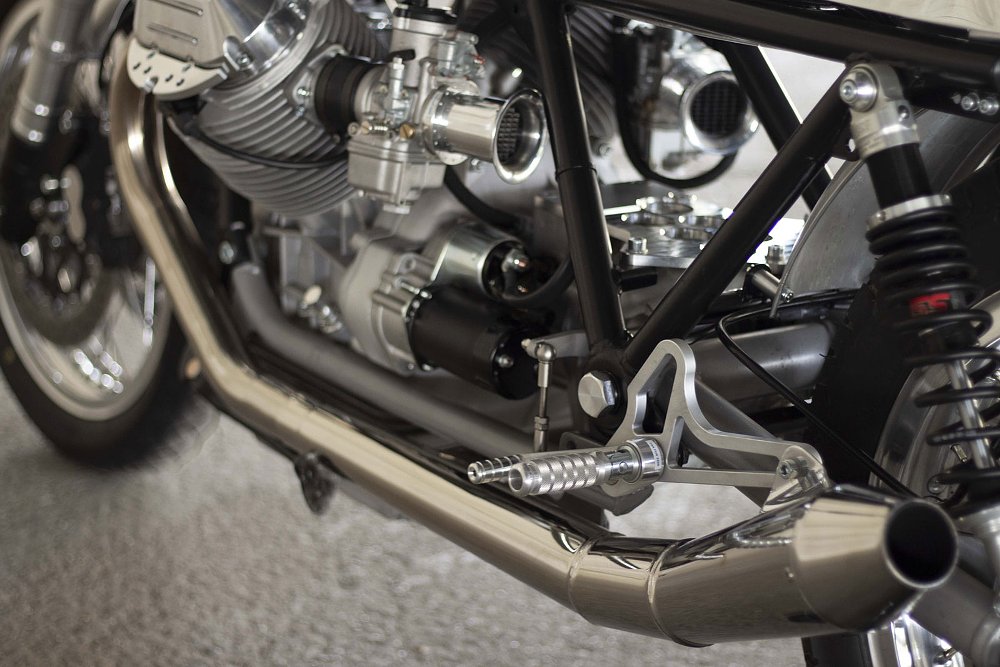
Topping off the exhaustive list of mods on this Le Mans is a series of custom-designed and machined components, covering everything from fender mounts to engine guards and rearset footpegs. To ensure seamless functionality, Paul also outfitted this bike with a full suite of Motogadget electronics.
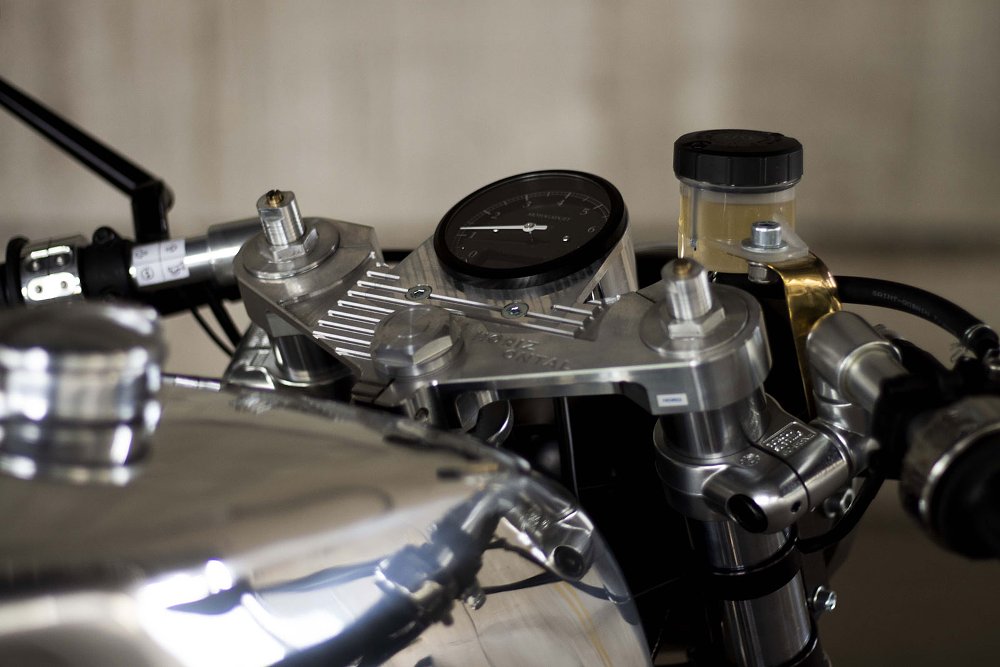
In addition to engine enhancements, the HM 923 benefits from a comprehensive handling upgrade. A 45 mm Showa fork, housed in Horizontal Moto CNC-milled triple trees, feature four-piston brakes and a shouldered 3.00 rim. In the rear, modern YSS shocks and a wider swingarm accommodate a 3.50 shouldered rim and 130-section tire. Staying true to Paul's design philosophy, these changes have also leveled out the Guzzi's bone line to achieve the quintessential café racer stance.
If Tonti were here to see this beauty, he'd surely approve.
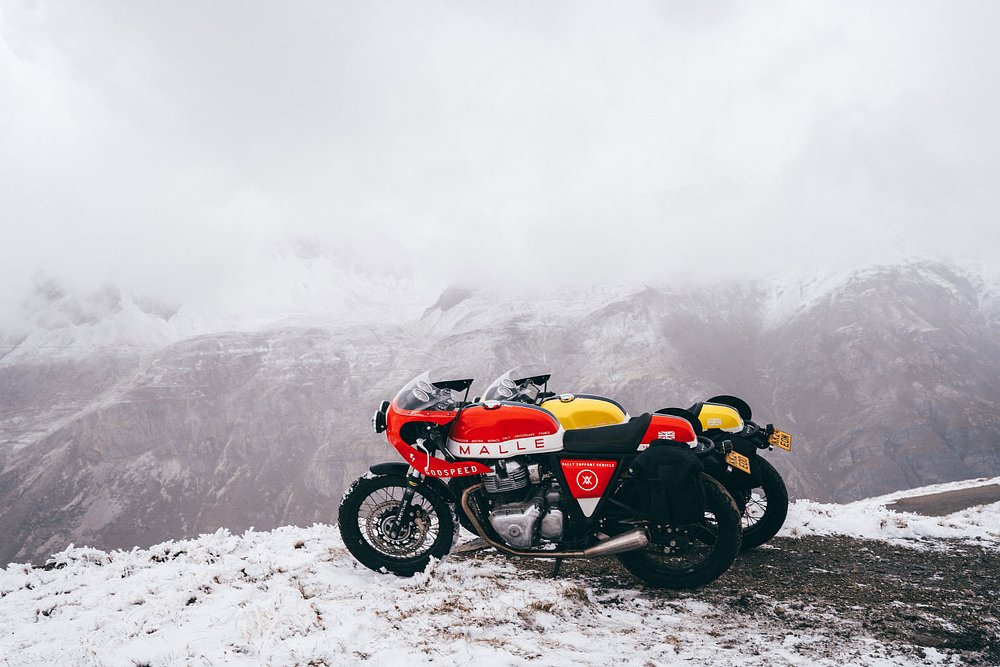
Malle Rally GT650 support bikes
The Great Malle Mountain Rally is the brainchild of Robert Nightingale, founder of Malle London. The six-day event is renowned as the longest motorcycle rally ever attempted across the entire Alps mountain range. The rally starts in Austria and takes 100 riders through six countries, covering 1,500 miles, traveling from sea level to 10,000 feet, and back down to finish in Monaco.
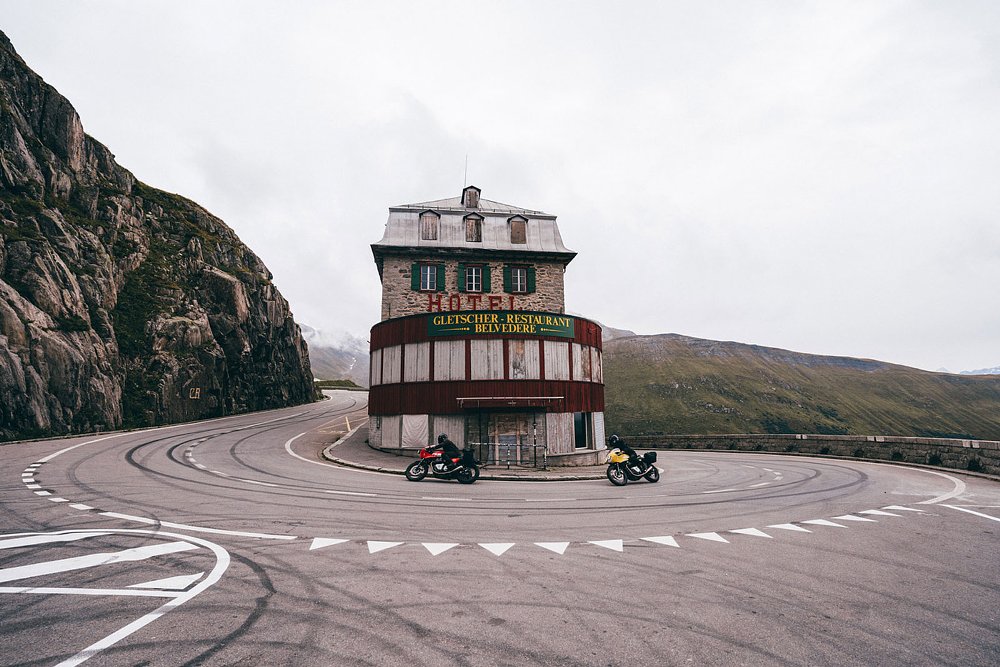
The latest edition of the Mountain Rally marked its fourth anniversary and one thing Robert has learned over the years is that reliable support vehicles are a must. "These machines need to endure!" he says. "They will be the last out and the last in on every rally stage, often coming back into rally camp well after dark, riding through all weather conditions, covering greater distances on the rally research trips, and doing whatever is necessary to get every man, woman, and rally machine across the Mountain Rally finish line."
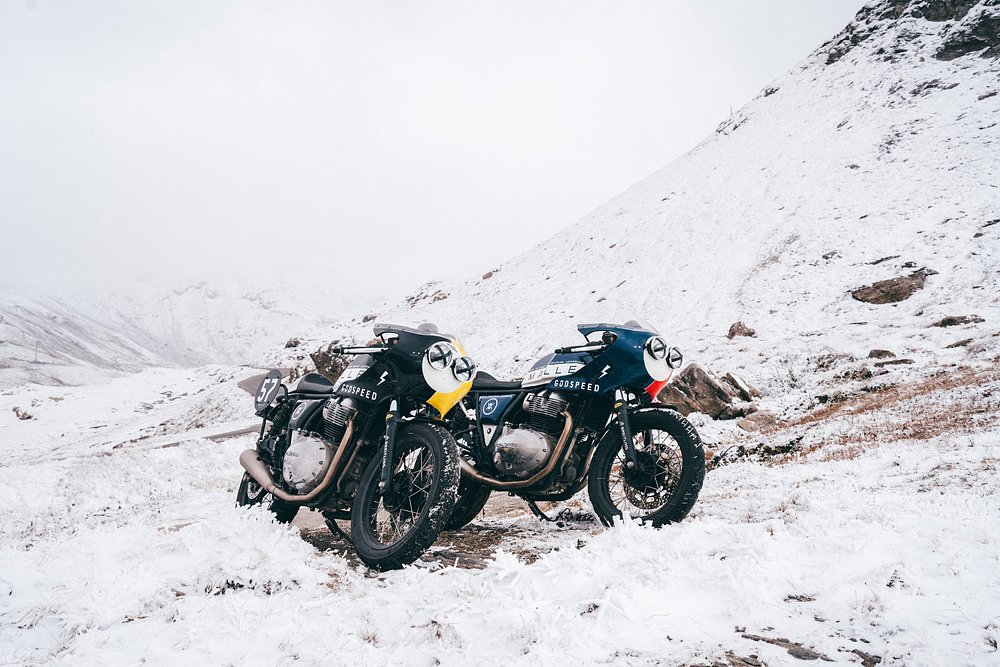
Having already worked closely with Royal Enfield in the past, Robert chose two Continental GT650s. "The design of these Enfields was driven purely by function —a tool for the job," he says. "The first sketches featured the obligatory additional rally lighting, toolboxes, medic packs, fuel packs, and spare kit, but with a more protected riding position. This allowed the engineers to tuck in behind a fairing, perfectly positioned to carve through the relentless Alpine switchbacks."
As Robert developed his concept for the support bikes, the word "endurance" kept coming to mind. The Mountain Rally is no walk in the park, and this is particularly true for the support riders, who could be in the saddle for more than 12 hours a day. With this in mind, he found his inspiration in endurance race bikes of the 1970s.
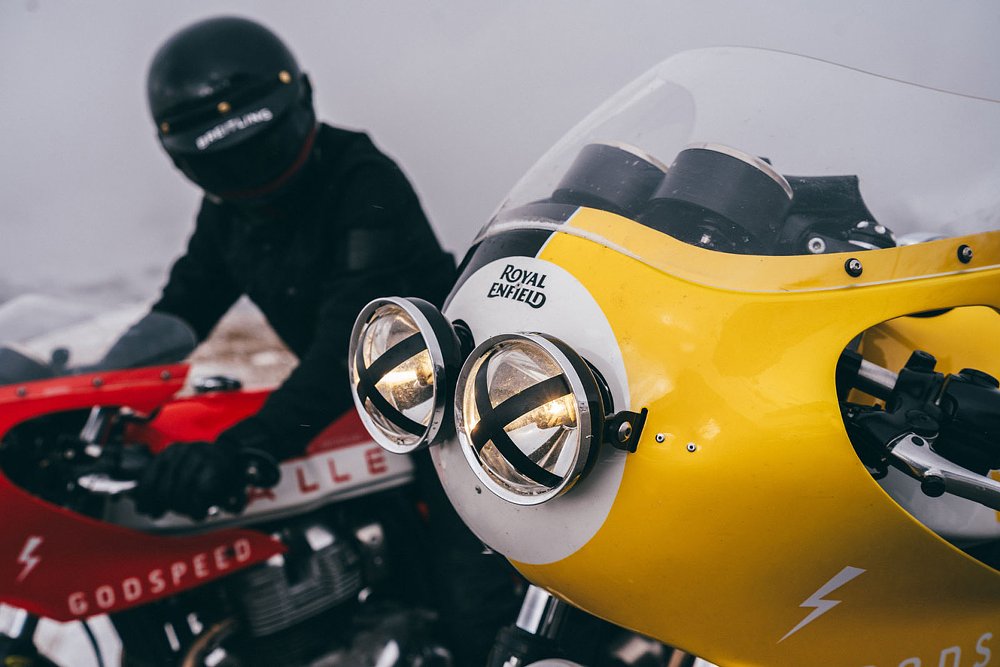
A crucial design element for these motorcycles was the fitment of the new bodywork. The Endurance-inspired fairings came in the form of a half-cowl with twin headlights, for added wind protection and improved visibility. Custom rear cowls convert the GTs into single-seaters. On one side of the tail sits a race-style plate, while on the other, a luggage rack and Malle Expedition pannier equipped with essential support supplies. Kellermann micro indicators retain functionality without detracting from the look. Complementing the new bodywork are clip-ons and adjustable rearsets from Enfield partner company Harris Performance.
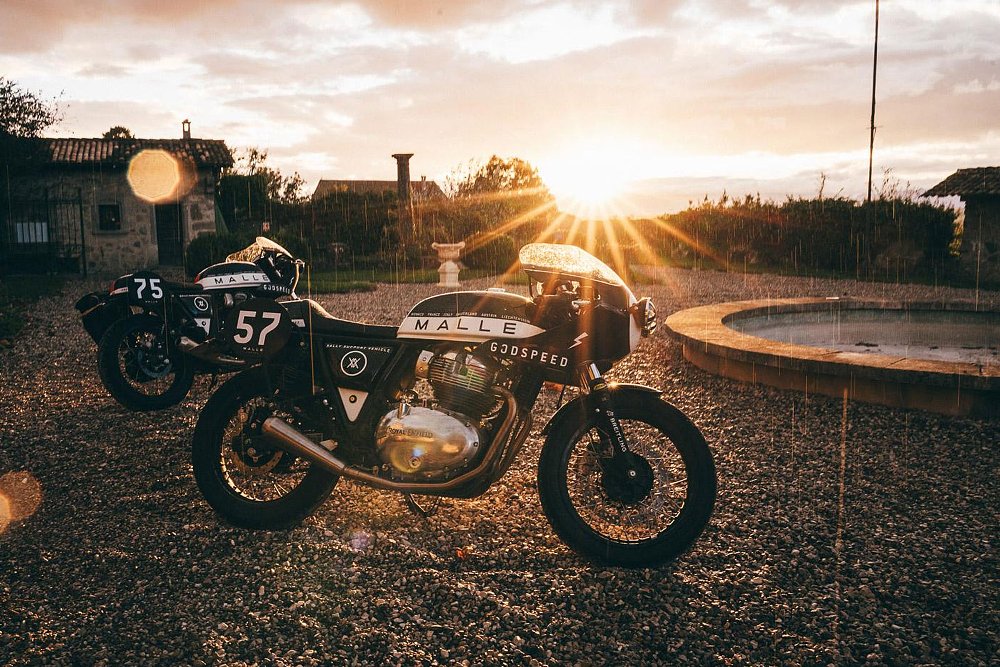
To ensure the steadfast reliability of these support vehicles, it was decided to leave the bikes' tried-and-tested parallel twins untouched. Instead, performance upgrades come in the form of premium front and rear K-Tech suspension and Bridgestone BT46 Battlax touring rubber to help subdue any slippery surfaces.
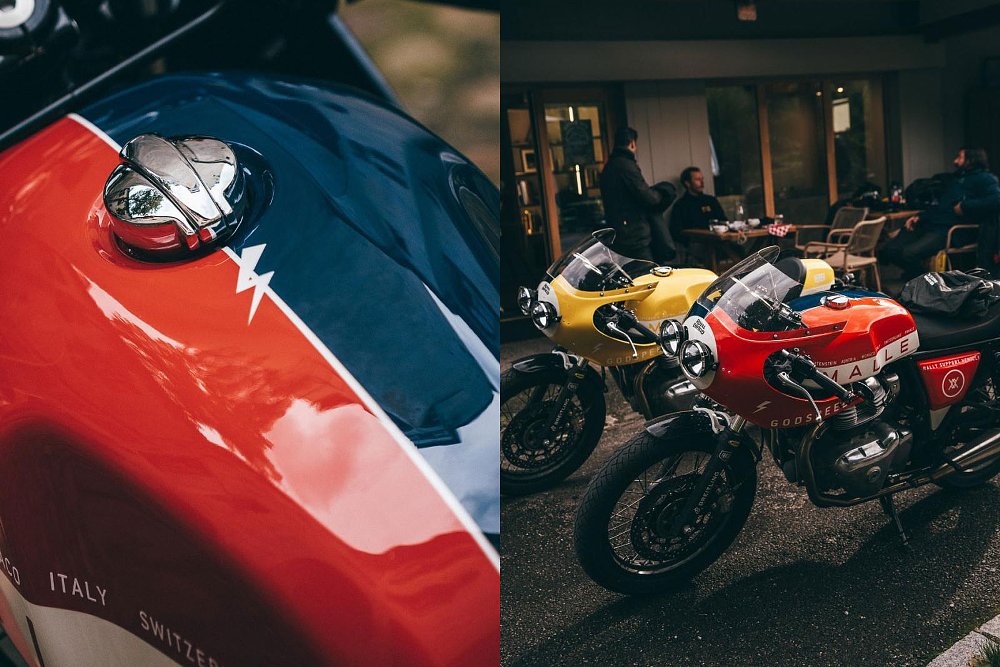
To complete the transformation, the GTs have been finished in custom livery that pays homage to the rally itself. "The unique 'Dual' custom paintwork was inspired by the colors of the flags of the Alpine countries the Mountain Rally passes through," Robert explains.
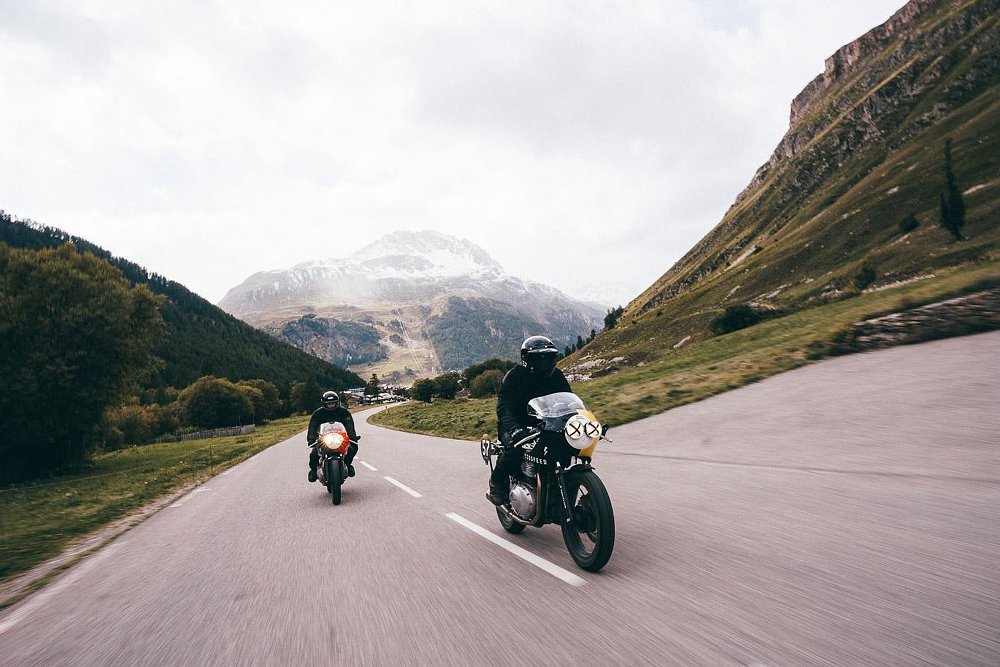
During the Mountain Rally, the Malle Enfields were well and truly put through their paces. Riding through temperatures ranging from sweltering to below freezing and enduring all manner of weather conditions (including an unexpected snowstorm), these custom 650 twins proved themselves very capable.

 Membership
Membership

